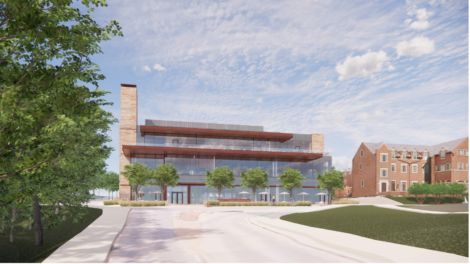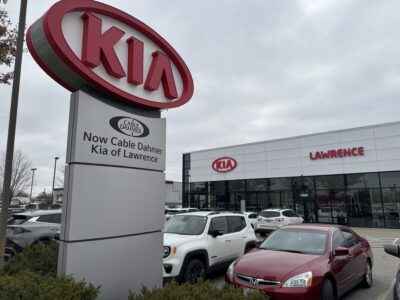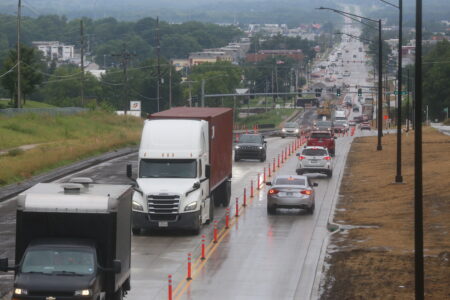
Study underway to determine whether Lawrence airport should expand to handle 737s and other big commercial jets

In this 2009 file photo of Lawrence Municipal Airport, several vintage and modern aircraft are on display.
City officials can picture the day when big Boeing 737 jets are landing at the Lawrence Regional Airport in North Lawrence.
Now, they want to know whether aviation experts can also picture it.
The city has agreed to hire a consultant to conduct an approximately $100,000 feasibility study on whether the runway and other infrastructure at the city-owned airport could be expanded to house large commercial aircraft like 737s or the slightly smaller Boeing 717. The big aircraft are common sights at places like Kansas City International Airport, but they have always been too big for the Lawrence airport to accommodate.
Why are city officials now interested in changing that? A twist on a Lawrence truism explains some of the desire. The truism: The higher the Jayhawks fly, the better it is for Lawrence’s economy. The twist: Maybe where the Jayhawks take off and land from matters too.
In other words, if the Lawrence airport can accommodate large commercial jets, it would become more likely that the multitude of KU sports teams and their competitors would use it.
“Ideally we would love to get the University of Kansas and other large Big 12 charter flights using Lawrence Regional Airport instead of going out of Forbes in Topeka or whatever facilities they use,” Scott Wagner, the airport manager for the city of Lawrence, said.
Whether getting such KU traffic at the airport would justify the significant costs to expand, widen and strengthen the airport’s main runway is unclear. The city makes money on fuel sales and other fees that are charged to aircraft using the airport. That’s one of the questions the consultant has been tasked with answering. The Arkansas-based engineering firm Garver is expected to determine how much new demand the Lawrence airport would receive if it could handle bigger jets. It also will determine how much infrastructure would need to be updated to accommodate the large aircraft.
City officials are working on an assumption that the airport’s main runway will need to be extended by 600 feet. Other infrastructure improvements likely will be required for the project. That could include improvements to taxiway areas, aprons and other locations the big jets will navigate. Plus, the city will have to determine whether the Federal Aviation Administration will require the city to have upgraded firefighting and snow removal equipment at the airport, on par with bigger facilities.
“It sounds easy,” Wagner said of a runway expansion, “but it is not, because of all the other infrastructure that would support the primary runway.”
City officials haven’t released an estimate of what the total costs may be to expand the airport. Creating a cost estimate is one of the purposes of the feasibility study. Wagner, though, said they would be significant and that the city may need to talk with the state’s congressional delegation to get a special funding bill — sometimes called an earmark — to help pay for any expansion.
One idea that probably won’t do much to help pay for the project is true commercial passenger air service out of Lawrence. While some smaller communities in the state — Manhattan is an example — have commuter flights to Kansas City, Denver or elsewhere, that’s hard to envision for Lawrence.
“I think that is a lot less likely in terms of commercial passenger service in Lawrence,” Wagner said.
Lawrence is likely too close to Kansas City International Airport to convince airline companies to locate service here.
But there could be other ways that demand picks up at the Lawrence airport. Garver will be asked to study whether the new 4,000-job, $4 billion Panasonic battery plant in De Soto will create new demand for the Lawrence airport.
Wagner also said the longer runway might create new opportunities for additional types of businesses to locate at the airport. For instance, it could create the potential for some cargo planes, or for businesses that service the large aircraft.
On that front, Wagner did have some updates on potential development at the airport. It includes:
• City officials remain in discussions with Dream Aviation about building a large hangar on the airport property to provide maintenance and refurbishing services for aircraft. Wagner said Dream is a business that has local ownership ties, including Chintaka Rajapaksha, who is an executive at the Lawrence Kia dealership. Rajapaksha has been in the news recently as being connected to a lawsuit against Lawrence Kia that alleges the dealership participated in a loan scheme. An arbiter recently ordered the dealership and several of its executives to pay $14 million in damages to impacted Kia customers.
• Work to refurbish the terminal building — where passengers await their aircraft — is set to begin next month. As we reported in August, the city received about $1 million as part of a federal infrastructure bill to make improvements at the terminal. Those improvements will include some roof and electrical work at the building, but also new flooring and a general upgrade of interior finishes.
“We want to bring it from 1986, when it was built, up to 2023,” Wagner said.
The city had identified about $2 million worth of improvements it wants to make at the terminal, but it hasn’t yet secured additional grant funding. Wagner said possible phase two improvements include improvements to the airport road, improved lighting leading to the airport, additional parking and new signage for the airport, which now has the name Lawrence Regional Airport. It previously was Lawrence Municipal Airport, but as we’ve reported, activity levels were high enough that the FAA approved the regional designation.







